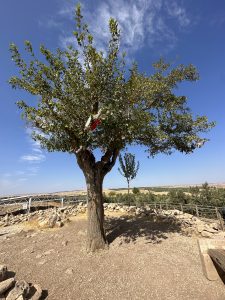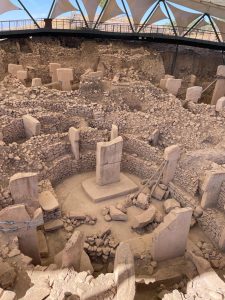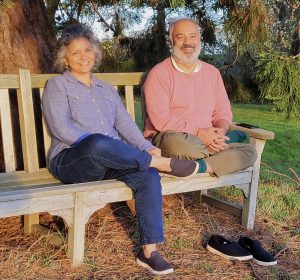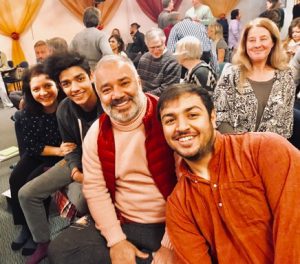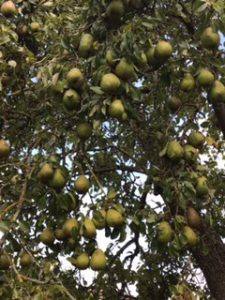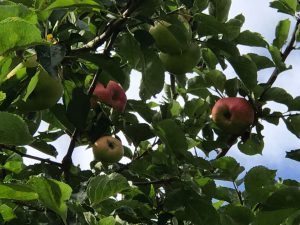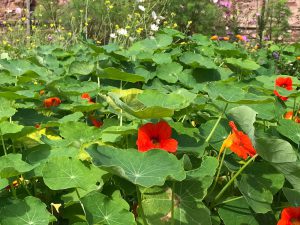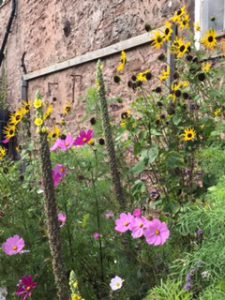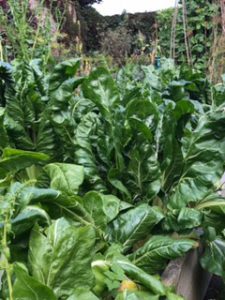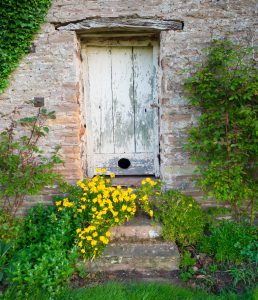Knowing the Force of Nature and its recipe
Navraatri, 9 nights dedicated to the divine mother
In 2023 Navraatri celebrations start 15 October 2023 and end 24 October 2023
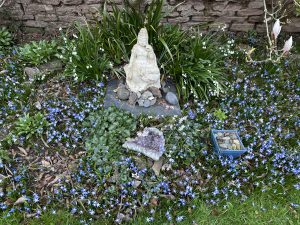
I was asked the question what can we do to acclimatise to the changing season? It inspired me to share what I do during a special period called Navrātri, which starts in autumn.
Navrātri means nine nights and is a period which occurs at least twice in a year; when winter turns to summer (Spring Navrātri) and when summer turns to winter (Autumn Navrātri). Navrātri is based on the lunar cycle, so start and ending dates vary from year to year.
The Spring Navrātri is called the Vasanta Navarātra and occurs in the lunar month of Caitra (March-April). It starts on the 1st day of the bright fortnight and ends on or after the 9th night.
The autumn Navrātri , called Sarannavarātra, occurs in the lunar month of Aasvina (Sept-Oct). It starts on the 1st day of the bright fortnight and ends on or after the 9th night. In fact the day after Navrātri, the 10th day is called Vijayadasami (day of victory).
The Navraatri period and Vijayadasami is celebrated throughout the sub-continent.
This is a spiritually charged period. It is a great time to replenish, to deepen and recommit to meditative practices and give attention to the body, mind, spirit matrix.
Tremendous change occurs in nature during the transition periods from winter to summer and summer to winter. From summer to winter; it gets colder, evenings and mornings are darker, the earth and plants begin their period of conservation. A period of abundance, growth gives way to a period of hibernation and restoration.
The peak period of this transitioning in nature is said to occur during these 9 days and nights called Navrātri.
If there is no change in habits to accommodate for the new season then colds and illnesses tend to follow. Our inherent intelligence knows of the change occurring in the fabric of nature but our senses hold onto our habits of the last season. We need to attune to this change.
I was introduced to Navrātri in or around 1997 by Divya’s family. Although my family celebrated Vijaydasaami (also known as Dussehra), the celebrations around Navrārti were new to me. Many people in India commit to a Vrat, a fast and eat one sattvic meal (a gentle balanced meal designed to promote stillness) a day and recite an esoteric hymn called the “Durga Saptashati otherwise called the Devi Mahātmyam”. This can be translated as 700 verses to the divine female force in the form of Durga – a hymn to the divine feminine. This is practice is common in Garhwal region of the Himalayas.
Other parts of India celebrate this period in their own unique way. For example, in Bengal elaborate rituals are invoked to different facets of the female energy and in Gujarat, it is celebrated by dressing up and dancing throughout the night. This dance is known as Navrātri Gharba.
For whatever reason, I started to discipline my diet for these 9 days. I allowed myself one meal a day, usually a vegetarian khichari (see below for the recipe). My Navrātri practice has developed since 1997. In this time I have experimented with the practice and in the process have a glimpse into the importance of this period filled with the energy of transformation.
The Navrātri period is infused with change. The attribute of this change, the latency of the change, the causal connection through which change occurs is a power, a force known as Shakti. Shakti, simply translated is power, force or energy. It has vibrancy and a nurturing quality and regarded as feminine in nature. By attuning into this change we can attempt to have a glimpse of this nurturing force, to its latent power and to its energy.
Nature is singing a hymn giving praise to this power effecting change which restores and then nourishes in preparation for next year’s spring Navrātri. It is a hymn whose rhythm is captured in the Durga Saptasati. The Durga Saptashati is an esoteric text multi layered with meaning.
Navrātri is a great time to give the body a break, and allow body, mind and spirit to align and to rejuvenate. Commit to a meditative practice during this period and become aware of what is happening; the changing colours of nature, how plants cease their external growth, to animals changing habits, to the skies, the wind and to your own energies.
Following a practice during this period gives insight into the practical applications of Ayurveda, Tantra, Yoga and develops intuition. It allows one to be in touch with the forces of nature.
The first day of Navraatri is devoted to goddess Shailputri, who brings wealth and the colour orange is worn.
The second day is dedicated to goddess Brahmacharini, who brings wisdom and understanding and the colour white is worn
The third day is dedicated to goddess Chandraghanta who brings grace and valour, and the colour red is worn
The fourth day to goddess, Kushmanda and her colour is royal blue, and she brings power and wealth
The fifth day to goddess Scandamata, who brings happiness, peace and wealth. Her colour is yellow.
The sixth day to goddess Katyayani who brings peace. Her favourite colour is green
The seventh day to goddess Kalaratri who brings strength and resilience. Her colour is grey
The eighth day to goddess Maha Gauri, who brings Tranquility and endurance. Her colour is purple
Ninth day to goddess Siddhidatri, who brings success and wealth. Her colour is Peacock green.
Below is an abridged translated verse from my favourite portion of the Durga Saptashati.
To that divine feminine force that manifests itself as wisdom, I welcome and give homage and respect,
To that divine feminine force that manifests itself as abundance, I welcome and give homage and respect,
To that divine feminine force that manifests itself as strength, I welcome and give homage and respect,
To that divine feminine force that manifests itself as faith, I welcome and give homage and respect,
To that divine feminine force that manifests itself as compassion, I welcome and give homage and respect,
To that divine feminine force that manifests itself as peace, I welcome and give homage and respect,
Peace, Peace Peace
| Kichadi recipe for Navrātri
My staple dish throughout the Navrātri period is Kitchadi. Kichadi forms the core of Ayurvedic nutritional healing as the food is easily digested and also draws out impurities from the body.
As a child, I recall my grandmother would always make either a dish called sondh (a sabzi made up of ginger) or what I now know to be Kichadi. The sondh recipe I use is a panacea for cold or flu but Kichadi is an all-round gentle dish ideal for promoting healing and to help with any detoxification programme.
Rice and Daal slowly cooked together with gentle spices forms the basic kitchadi dish. The range of spices used differs depending on what you wish to achieve. You can have kichadis, for example, that improves digestion, lung function, liver function, those that cool and so on. This Kichadi recipe is designed to aid digestion.
Ingredients
1 tablespoon of cumin seeds 2 teaspoons ghee or Oil (sunflower or cold pressed organic rapeseed)
1 bay leaf 2 peppercorns
1 tablespoon coriander seeds 1 teaspoon oregano
1 teaspoon haldi powder 1 teaspoon coriander powder
½ teaspoon hing (optional) ½ teaspoon of sea salt
2 tablespoon ginger root (grated) ½ cup basmati rice/brown
1 cup split mung daal 6 cups of water (more if required)
3 cups of seasonal organic vegetables (eg carrots/broccoli/courgettes/sweet potatoes/spinach/spinach/sweetcorn)
Directions
1. Wash rice and Split Mung Daal and drain
2. Warm ghee/oil (in a preferable iron pan)
3. Add cumin and coriander seeds (about 1 minute)
4. About 1 minute later add peppercorn
5. Then add hing, oregano, grated ginger root and fry for about 2 minutes
6. Add haldi and coriander powder and fry for about ½ minute.
7. Add rice and daal and water
8. Bring to the boil and simmer for at least 40 minutes.
9. Add salt and vegetables and simmer for another 10 -15 minutes. |
© Rajesh Rai
18 September 2014
Edited 2nd October 2023



